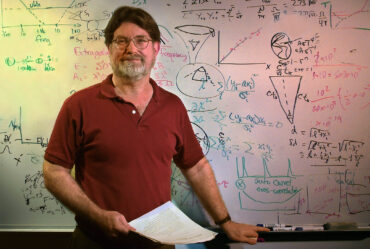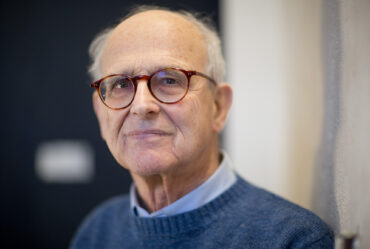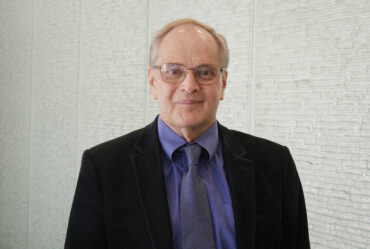
In Remembrance: Minh-Thi Nguyen
October 28, 1999 – June 21, 2024
Minh-Thi Nguyen, a third-year graduate student studying experimental physics, was killed June 21, 2024, while riding her bike from her Cambridge home to campus.
Minh-Thi worked in Professor Paola Cappellaro’s Quantum Engineering Group, in the Center for Ultracold Atoms, where many saw her as a rising star in the physics community. She was studying atomic, molecular, and optical physics, with research interests in quantum sensing, quantum computing, and quantum information processing, in both theory and experiment.
“Our hearts go out to her family and her many friends,” MIT President Sally Kornbluth wrote in her email to the community.

Affectionately known to family as “Chip,” Minh-Thi was born in Hanoi, Vietnam and spent her first five years between her parents in Amsterdam and her grandparents in Hanoi. She and her family moved to Troy, New York, and then to Orange County, California, where Minh-Thi spent her school years.
At Los Alamitos High School, Nguyen founded Growing Up STEM, a science outreach program that places high school students in elementary schools to lead science experiments. She played tennis and piano, and performed Wushu with broad swords.
She spent her sophomore year researching astrophysics at Caltech; as a junior she researched quantum optics in a Siemens Summer Research Fellowship at Stony Brook University; and as a senior, researched plasma physics at Princeton University.
She graduated as valedictorian of her graduating class of 2017.
At Princeton, where she graduated in 2021 with a degree in physics and a certificate in computer science, she brought first-years on backpacking orientation trips, led the Entrepreneurship club, played varsity rugby, was a peer academic advisor, performed in The Vagina Monologues, and modeled for Fashion Speaks.
Before she came to MIT, Minh-Thi Nguyen worked for the Cambridge quantum computing startup QuEra, where she solved the maximum independent set problem with a new quantum algorithm.
Even before starting graduate school, she has already contributed important results to the quantum information community, and published a paper in the physics journal PRX Quantum, “which is difficult for many doctoral students,” recalled her colleague Guoqing Wang PhD ’23.
Other past experiences included internships at Hybrid Quantum Systems Group, HRL Laboratories, the US Department of Energy, Stanford University, Convection Lab, and Max Planck Institute, and was a D.E. Shaw Discovery Fellow. On her LinkedIn page, she described herself as “a passionate, ambitious, and curious learner, interested in disruptive technologies and entrepreneurship.”
At MIT, Minh-Thi developed a quantum gyroscope based on nitrogen vacancy centers in diamond, which she presented at the 55th Annual Meeting of the APS Division of Atomic, Molecular and Optical Physics. This year, she received the National Science Foundation Graduate Research Fellowship.
“Only three months after her joining (Paola’s group), we came up with a very novel scheme for measuring rotation with much higher precision with quantum physics principles, a factor of ten to thousands more precise than previous quantum gyroscope,” says Guoqing Wang, now a postdoc in Prof. Vladan Vuletic’s group. “Just less than a year from her joining the group, we submitted two joint papers together. I was always feeling very lucky that she came and brought us so many nice research ideas and impacts. It is such a big loss of not only her colleagues, but also the community of science.”
Paola was her research advisor for the past two years, and last year welcomed her into her research group. “Minh-Thi was an exceptional student,” says Paola, who also had her in her Quantum Technology and Devices class. “The class had a final project and Minh-Thi decided to look at quantum gyroscopes. Fast-forward one year and we have not one, but two papers submitted, a patent application, and Minh-Thi has presented her work at a conference.”
Adds Paola, “She was not only super-smart, but also fearless in tackling new projects and challenges and always inventive. She was working on multiple projects at the same time, from theory, to bio-sensing, to the most complex many-body quantum dynamics, and bringing her physics intuition and experimental grit.”
Called “Mint” by her friends, Minh-Thi was known as a kind friend who threw overflowing dinner parties, and was active in the Graduate Student Council and the Outing Club. A woman with an adventurous spirit, she was a skier, a marathon runner, and a hiker who tackled the Italian Dolomites.
“We held an open house just after her death for students who needed someplace to process,” says Academic Administrator Shannon Larkin. “It seems that everyone who knew her got to know her because she convinced them to go on an adventure with her. She was the kind of person that pulled other people together who might not have come together otherwise.”
Her family recalls her “zest for life and adventure like no other, and she put others before herself — without fail.”
“She was an overall amazing person, always a joy to interact with, generous with her friendship and mentorship,” says Paola. “She made us all better, and we will remember and honor her for that.”
Cambridge Bicycle Safety, a cycling advocacy group, hosted a vigil at Cambridge City Hall for her and another cyclist who also was killed recently in an accident involving a box truck.
She is survived by her younger sister, Julia Nguyen; her parents, Hoa Tran and Hieu Nguyen; her boyfriend, Nick Krasnow; and dog, Cooper.
In lieu of flowers, donations may be made to a GoFundMe set up on behalf of the family. Her obituary at Legacy.com shares family stories of her “unbreakable spirit.”


